How to freeze less working at an office
I freeze easily. I don’t really know why.
It could be because it is just cold where I live.
…Or that the thermostat is fixed at a too low room temperature.
…Or it could be because women’s clothing are made so thin and light and are not designed to keep the wearer warm.
…Or because women typically produce less body heat than men, meaning they are more likely to feel chilled or freeze indoor.
…Or it could be me as an individual having an abnormal metabolism. (I have been to the doctor – my numbers look fine.)
No matter what, the fact is that I freeze easily and it affect me when I am working.
When you are freezing your fingers, it is pretty difficult to type on a keyboard and do the kind of office work that I do.
The feeling of freezing in general can be very damaging for your overall productivity.. So this is really a problem worth solving.
I want my solution to not only to solve my temperature problem but ideally also not cause any other problem or hinder to my work.
I don’t want to be obscured. Too many layers and blankets harm my movement and can be a hassle if I need to get up to go to a meeting / out during a fire drill / go get a cup of tea / do anything else than just sit at my desk Maybe I am being overly picky, but ideally I also do not want to look like the Office Yeti, shrouded in blankets and winter-outerwear from top to toe. So how do I solve my issue of feeling cold without wearing my entire wardrobe at once?
Here is the list of things I have tried so far – some of which might be very trivial to you, dear reader. I have divided the list into what I found to work and what did not work for me (or simply was not to be worth it).
Last updated: March 22 2020
What works for me
Drink hot drinks
There are two amazing benefits to hot beverages:
- by drinking them they heat you up from the inside, and
- by placing your hands on the outside of your warm mug, you can use it as a finger heater.
Find a good big, sturdy ceramic mug to use as a finger heater and keep a good selection of your favourite hot beverages in your office space.
It doesn’t really matter if the cup contains coffee, tea, hot cocoa, or simply boiled water – you can use whatever you like the most.
Especially in winter when I (surprise, surprise) freeze the most, I feel how the daily number of hot drinks is inversely proportional to the number of shivers I do.
I have found that in order not to overindulge on caffeine I prefer to drink low-caffeine tea in winter. Herbal tea is my go-to choice, but a white Earl Grey or a Jasmine green tea is a nice alternative.
Protect the extremities
The blood flow to the tips of the fingers and toes tend to shut off more readily when it is cold.
This is apparently especially true for women as they distribute their body heat differently that men, with the body heat being centralised around the vital organs instead of heatings the outer parts of the body such as hands and feet.
I like to wear computer gloves. These are gloves I wear inside and they are different from outside gloves as they need to be thin and tight-fitting, so I can type on a keyboard without slipping around or mistyping.
I am still searching for the perfect pair of computer gloves. So far, I use either my normal running gloves
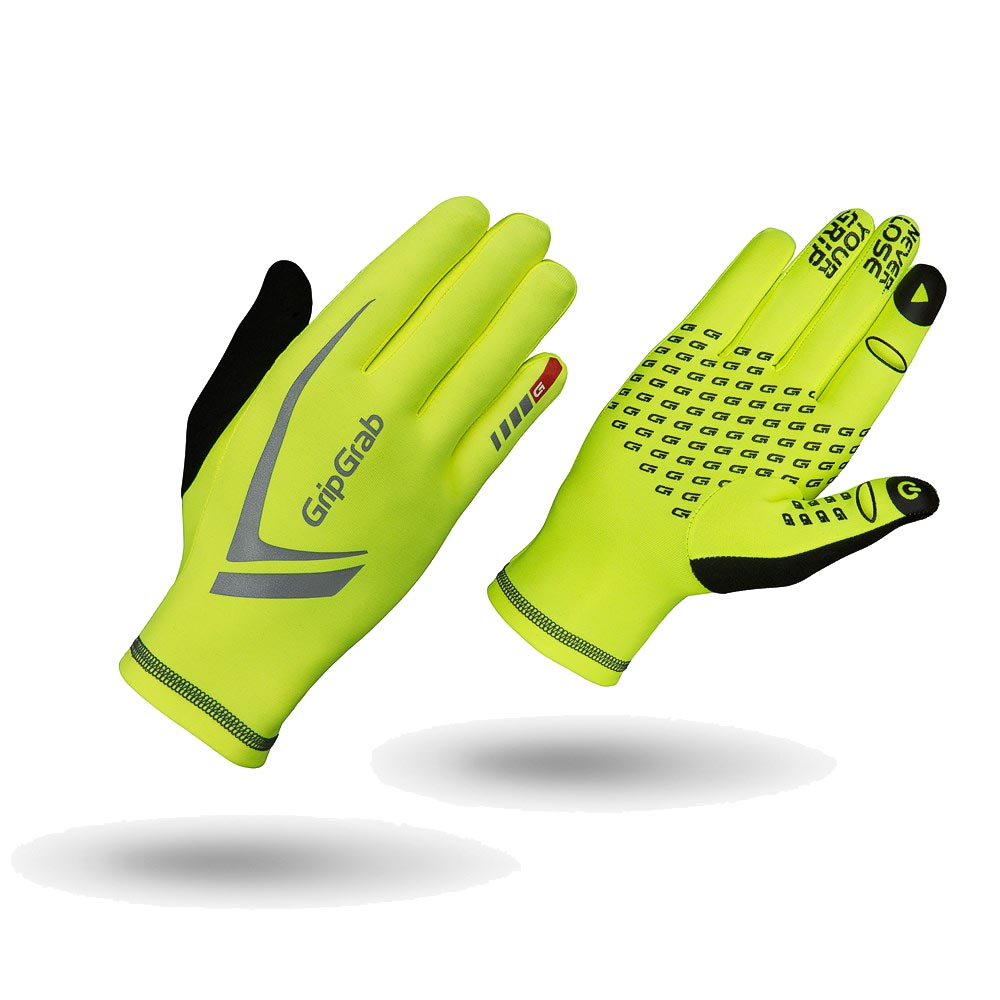
Running gloves: not that discreet and a bit too thick of a material.
or a hoodie with a thumb hole or fingerless-gloves.
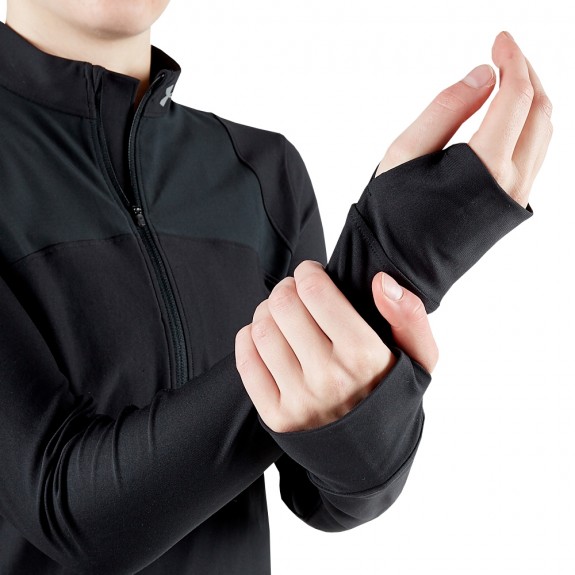
Fingerless-gloves (or thumb holes) are a part of a few of my hoodies and are nice but they fail to keep the coldest part of my body warm: my fingers.
I also like to wear good socks and to keep extra socks at the office.
This sounds trivial, but it works. Buy good, high-rising socks of a nice quality and lots of them. For extra cold days, wear woolen, knitted socks on top of your normal socks.
I also like to keep extra pairs of socks at my office, for extra cold days and in case of weather-related emergencies. It is difficult to keep warm if you are wearing wet clothes. If it it snows or rains and your shoes and socks get wet on your way to work, it saves the day to have something nice and dry to change into.
Wraps, wraps, and more wraps
I mentioned already that I do not like to be draped in a multitude of fabrics.
However, it is nice to have different options to keep warm when you are feeling cold in the varying degrees from chilled to freezing.
A scarf can be worn normally or as a small blanket or shawl.
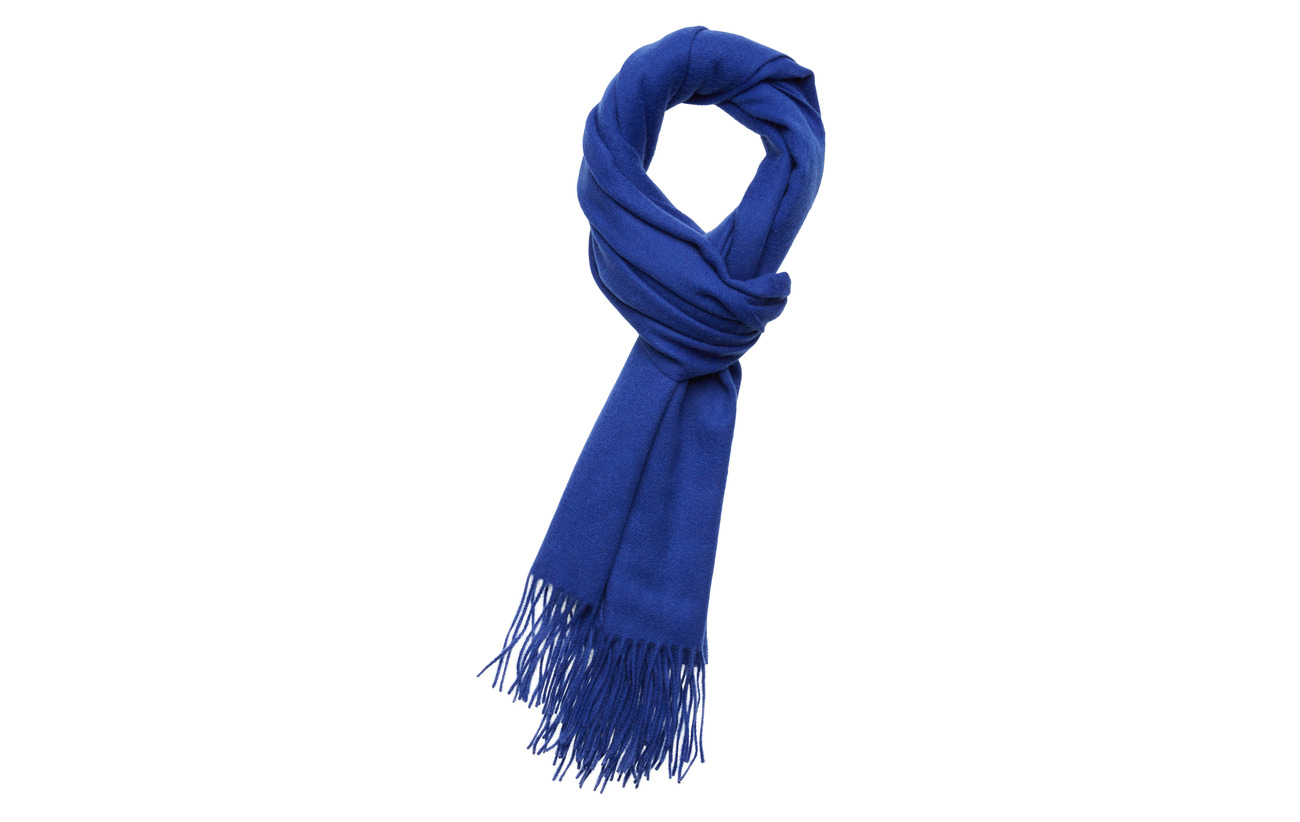
A scarf does not take up a lot of space and is super convenient.
Adding layers is a different way of keeping warm.
I usually have both a cardigan and a hoodie (with a thumb hole) at my desk to put on if I am feeling a little cold. I have both so I can decide which one I want to wear based on the rest of my outfit.
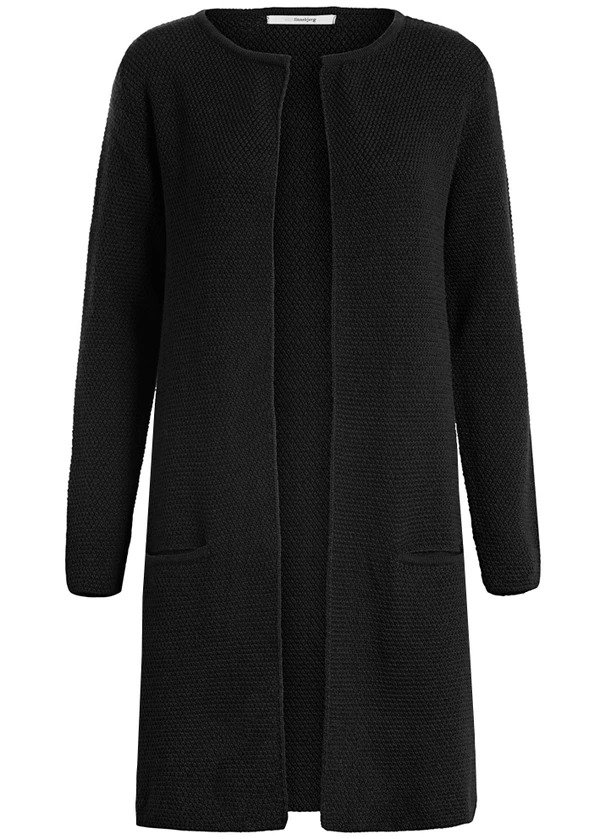
Go for a cardigan in a good material such as this one made from
If it is even colder, I also have a fleece blanket in one of my office drawers.
It is bright orange, and not that discreet, but it is nice for the winter days where I will be sitting at my desk all day without a lot of meetings or teaching to attend to.
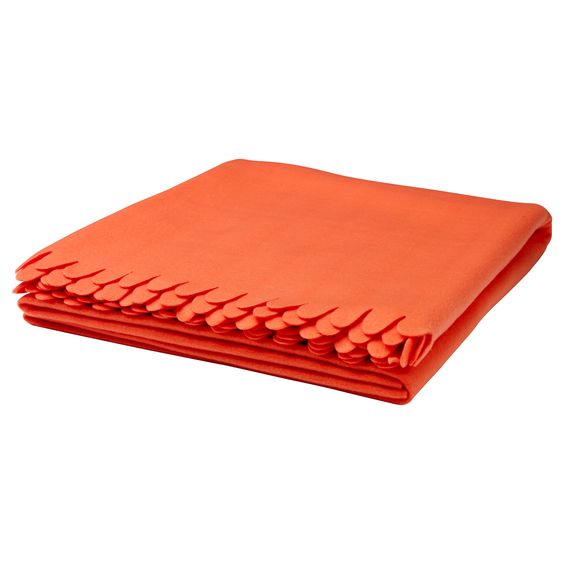
A blanket is also amazing in the late afternoons / evenings / weekeend at the office, where the heating for some reason seems to be turned off.
On the more extreme winter days, these things can be combined on the cost of turning you into the mystical Office Yeti. The Office Yeti which looks abominable but feels warm and comfortable (and less and less able to move). Again, not ideal, but better than getting nothing done I guess.
You can wear the sweater and use the long cardigan as a blanket by binding the arms together around your waist.
If you do not have a blanket or a extra cardigan, you can use your coat.
Electric seat-warmers
I boroughed one and used one a couple of times in my home office (which is less cold than my office).

Overall, I can see a similar product might working for me, especially on the very cold winter days.
The cord was a bit short, the heating very localised, and you need to turn it off for an extended period of time to prevent overheating. I can see a different, similar product working for me, but I have yet to find what I am looking for.
What does not work for me
Reuseable heat packs
These work alright, but are a bit of a hassle.
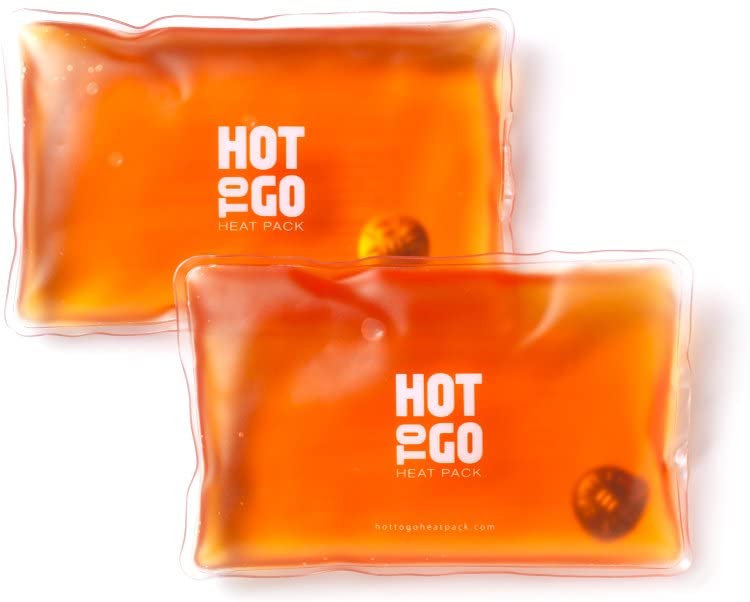
They warm your fingers for at most half an hour.
In order to reset them, you need to boil them and let them cool (and remember to do so before you need to use them again).
I find the same heating effect (and less extra work) from enjoying a warm cup of tea.
Exercise
Many people say that by increasing your daily exercise you also increase your body temperature and thus you should freeze less.
I have not found this to be true for me.
Yes, when I am out for a run I do feel warmer, but for the remainder of my day I still feel cold.
Maybe the effect is too small for me to feel or maybe I just have not increased my daily exercise pattern enough.
Finger exercises
Some people have advised my to do targeted exercises aimed at the body parts I freeze the most: my fingers.
I find the heating from these exercises to disappear almost immediately after I stop doing them.
Also, I cannot get any work done while I am stretching, lifting or pressing my fingers to keep them warm.
USB heating gloves
These heaters usually have no stopping criteria and will burn your hands!
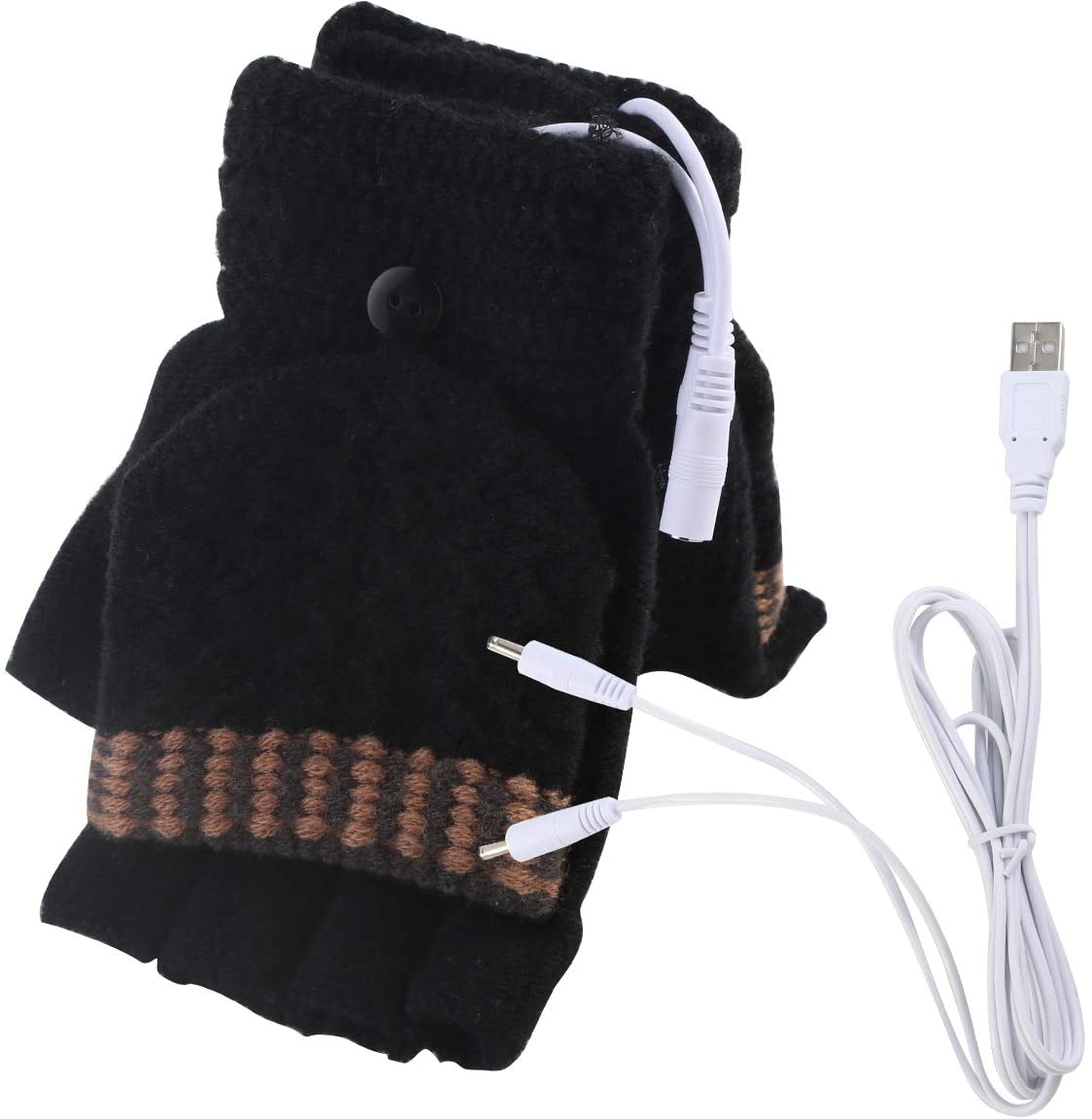
A burning power output that is not great for neither your hand, your economy, nor the environment.
These are a fire hazard and they make a small, high-pitched humming noise that is distracting.
So the noise alone is too annoying for me to use them.
..and you need to be plugged in to your computer for these to work.
.. and being burned is not a better alternative to being cold.
So in summary
I keep the following items at my office desk
- 1 big ceramic tea cup
- A well-stocked cabinet of teas and coffees.
- A woolen cardigan
- A hoodie with thumb hole
- An emergency fleece blanket
- Extra woolen socks and extra pairs of normal socks